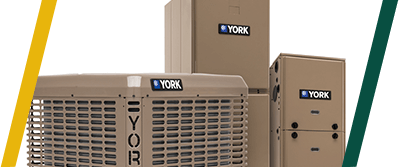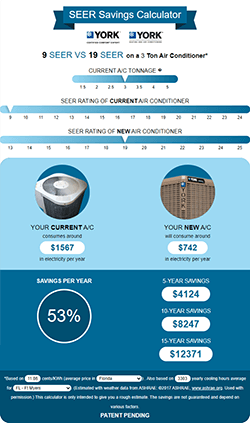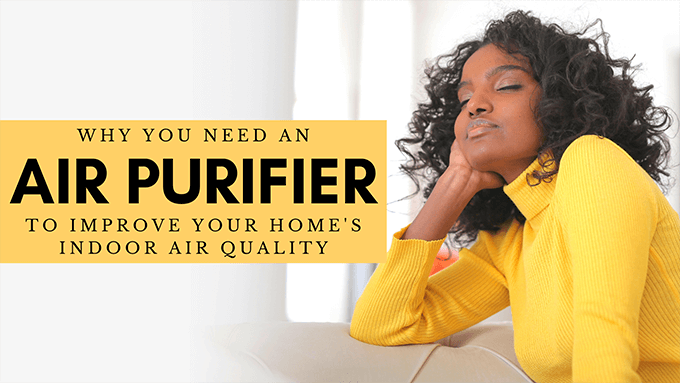
Your home’s indoor air quality plays an important role in your health and wellbeing. Even before pandemic lockdowns and work-from-home mandates, we spent up to 90% of our time indoors, and 65% of that time at home[1]. Dorothy said it best in The Wizard of Oz – there’s no place like home.
But unlike Dorothy’s cottage in rural early 1900’s Kansas, modern houses and buildings are constructed to be airtight. This is good news for your electric bill, but it’s not so beneficial for your health. Unless there is heavy air pollution in your area, a sealed home blocks fresh air from entering and traps airborne pollutants inside. In fact, according to studies by the EPA[2], indoor air contains a level of pollutants 2-5 times higher than outdoor air.
So, what can you do to make the air in your home healthier? The EPA recommends three primary ways to improve indoor air quality[3]:
- controlling issues at their source,
- improving ventilation and
- using an air cleaner.
While we agree all three methods are valid and important, the third method – using an air cleaner – should not be ignored. In fact, an air purifier – also called an air cleaner – is a vital investment if you’re serious about improving your home’s indoor air quality. Keep reading to find out why.

First, What Air Pollutants Might You Find in Your Home?
By pollutants, we mean biological gunk like dust, dander, pollen, mold, bacteria and viruses. We’re also referring to chemical contaminants. These include sinister substances like formaldehyde and asbestos, as well as volatile organic compounds (VOC) found in cleaning products, home furnishings, pesticides, adhesives, etc. Other common air pollutants include odors and smoke.
Some of these pollutants can cause allergic reactions. Exposure to others could create more serious health problems. In office environments, a high concentration of certain air pollutants can lead to a condition known as sick building syndrome[4]. Workers affected by this condition most commonly experience headaches or respiratory symptoms. In extreme cases, cancer and other diseases can result. Though it’s an extreme example, sick building syndrome shows just how vital good indoor air quality is to our health.
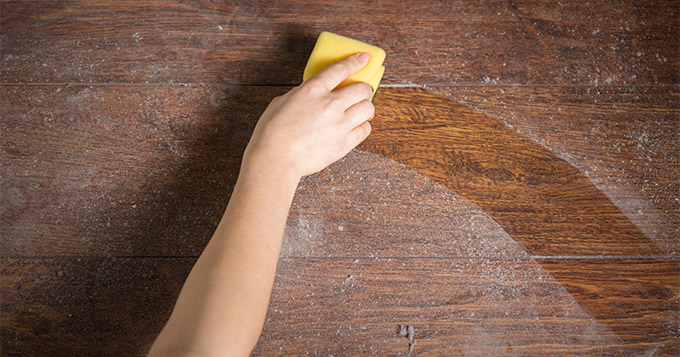
You Can’t Always Control the Source of an Indoor Air Quality Problem.
If you’ve noticed any problems with the air quality in your home, you know that the first step is to find the source. This is especially true in cases involving mold or mildew. Eradicating the mold growth is the most effective way to prevent symptoms in sensitive individuals.
If your problem is allergies triggered by dust, pet dander or pollen, source control involves regularly wiping surfaces, washing bedding, and vacuuming or cleaning carpeting and upholstery. A good cleaning regimen can also help mitigate the spread of bacteria and viruses. Store substances that emit VOCs, such as paint, cleaning products and adhesives, in sealed containers. Or better yet, keep them in your garage or shed – away from your living space. You might also consider replacing your dust-collecting carpet with tile, stone, or hardwood.
But despite your best efforts at removing air pollutants from your home, it’s not always possible to eradicate the source of the problem. As if by some dark magic, dust will always reappear. Viruses, including COVID-19, spread through the air, so they won’t always rest on surfaces you can wipe down. Even though Fluffy is triggering your pet dander allergy, re-homing her is not a desirable solution.
An air purifier is an excellent supplement to source control measures, like cleaning. It can also make life with Fluffy’s dander more bearable. Additionally, some air purifiers can neutralize airborne particles, viruses and bacteria that cleaning alone can’t conquer.
What about the EPA’s second recommended method for improving air quality, increasing ventilation?
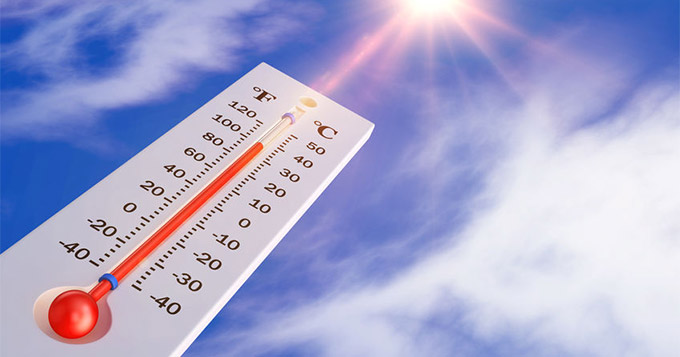
You Can’t Always Let Fresh Air into Your Home.
It’s true that a little fresh air can go a long way in improving poor air quality. The EPA recommends increasing your home’s ventilation by opening windows and doors and making use of exhaust fans in your kitchen and bathroom. You can even install a device called an Energy Recovery Ventilator. This device replaces stale air in your home with fresh air via your existing central air duct system.
Adequate ventilation is crucial when using products that emit chemical fumes. Always do activities like craft or hobby projects, cleaning with harsh chemicals, painting, staining, and paint stripping in well-ventilated spaces – or outdoors, when possible.
But what about cases where outdoor conditions are too hot, cold or humid? Here in Englewood, Florida, we run our air conditioners most of the year. Air conditioning systems cools and dehumidify best when the cooled air stays in and the hot air stays out. The same principle is true for heating systems in cold climates.
Or what about areas subject to high levels of air pollution? You don’t want to open the windows to contaminants like red tide – a common problem in Florida coastal communities – fine dust, industrial fumes, vehicle exhaust, or pollen.
Clearly, increasing ventilation is not always an option. In cases like those cited above, an air purifier is the more effective and safer way to improve indoor air quality.
An Air Cleaner Accomplishes What Other Indoor Air Quality Improvement Methods Can’t.
We’ve established that source control and ventilation, while important measures, can’t solve all air quality issues. These methods are also not practicable in all cases. Not only do air purifiers fill in the gaps left by other air quality improvement techniques, they can also represent a comprehensive indoor air quality control measure.
There are two primary types of air purifiers – portable models and whole-house systems.
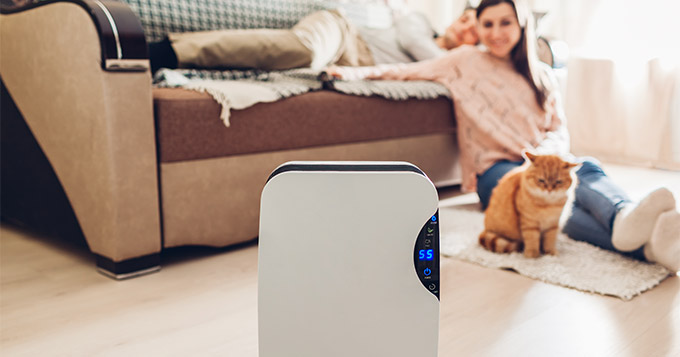
Portable Air Purifiers
This type of air cleaner is a stand-alone device. Designed to purify the air in a small space, you can place the device in any room in your house. To measure their effectiveness, portable air purifiers have a rating system called Clean Air Delivery Rate (CADR). The higher the CADR rating, the more square footage the air purifier can cover. CADR measures how well the device filters particles (think dust and dander) in an area of a certain size. CADR does not measure gas filtration (odors and VOCs). Although some air purifiers do filter both particulate matter and gases, this feature is not universal. So, it’s important to look for one that does both. Also, CADR is typically measured by running the air purifier at its highest speed.
We recommend avoiding portable air purifiers that generate ozone. Ozone irritates the lungs and is generally considered more harmful than beneficial.
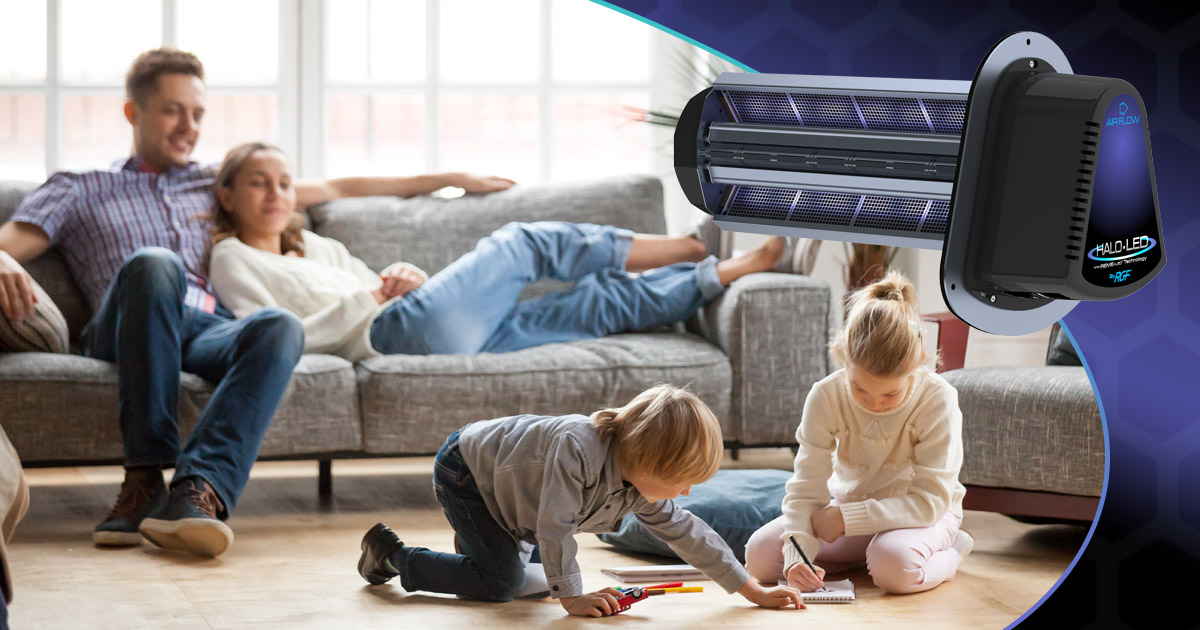
Whole-House Air Filtration Systems
For the best home air filtration available, you need a whole-house air purifier. These devices work in conjunction with your existing central heating, ventilation and air conditioning (HVAC) system. The main advantage of a whole-house air filtration system is that it is not limited to one room in your house, like a portable air purifier. Instead, it can clean and purify the air in every room in your house while your central AC is running.
One prime example of a whole-home air purifier is the RGF HALO LED. This device is proven to be 99% effective at killing germs, bacteria and viruses on surfaces and in the air throughout your home. It is also highly effective at reducing odors, smoke, VOCs, dust and other particulate matter. Plus, it’s ozone and mercury free.
A whole-house air filtration system like the HALO LED can be very effective climates like Southwest Florida, where the central AC is often in use. But even when not cooling or heating your home, you can also run the AC on fan-only mode (generally represented by the “ON” setting on the thermostat). That way, the air purification system will continue to filter the air.
An Air Purification System is Integral to Any Strategy for Improving Indoor Air Quality.
The EPA’s three recommended methods for improving your home’s air quality – controlling the source, increasing ventilation, and using an air purifier – have their own merits and use cases. But as you’ve now learned, neither of the first two methods is effective or practicable in all cases. Also, these two techniques do not solve all indoor air quality issues. If you want to take your indoor air quality seriously, an air cleaner is a must-have. Of the types of air purifiers you can buy, a whole-house system is the most effective. The RGF HALO LED is an excellent example, capable of reducing viruses, particulate matter, VOCs and more on surfaces and in the air.
Are You Interested in a Whole-Home Air Purifier?
At Kobie Complete, we offer a selection of whole-house air filtration systems to help improve your home’s indoor air quality. Call (941) 474-3691 today for more information. Our home comfort experts will advise you on the proper air purifier for your needs.
Get a Free, No Obligation Quote on a Whole-House Air Purification System
Do you live in Sarasota or Charlotte County, Florida? Kobie Complete’s service area spans from Sarasota to Punta Gorda. Fill out the form below to get a free, no-obligation quote on an indoor air quality system, including installation and warranty.
Sources:
[1] https://www.ashrae.org/technical-resources/free-resources/10-tips-for-home-indoor-air-quality
[2] https://www.epa.gov/report-environment/indoor-air-quality
[3] https://www.epa.gov/indoor-air-quality-iaq/improving-indoor-air-quality

